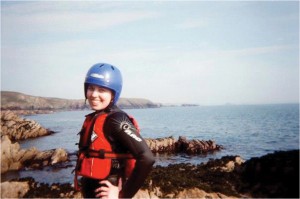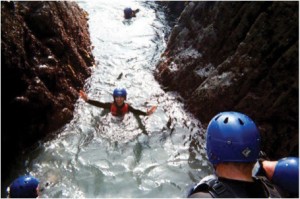To the editor:
I am disappointed by the misrepresentation and critique of the LGBT community in the previous two issues of The Bucknellian. While there are excellent points in each article that capture aspects of the lived experiences of gay, lesbian, bisexual and transgender individuals, these points are minimized within articles that portray caricatures, reinforce stereotypes and employ the very heteronormativity you decry. It is to be noted that both articles are opinion pieces, but many of the opinions are misinformed, under-researched and often contradictory.
In the Sept. 28 edition’s “Sleeping Around” column, the author, who utilizes a closet him/her/hirself with a pseudonym, defines “the closet” as an experience exclusive to queer men–negating the women and people of diverse genders who should be central when discussing this common experience of our community. The author further intones that any man who has sexual contact with another man will obviously construct his identity as gay–not queer, bisexual, pansexual, MSM, straight or other various labels one may use to connect with those of similar experiences or shared histories. Before offering very sound advice to allow people the space to come to terms with their own sexualities, the author engages in egregious stereotyping. Stereotyping based on the clothing one wears, the music one listens to or if someone has ever been in a sexual situation with another “dude” is not only harmful to those within the LGBT community, but reinforces notions of what is appropriate gendered behavior and polices those behaviors for anyone who is not or does not consider themselves gay.
“The proverbial closet” also fails to recognize that “coming out” is a life-long process, not the singular, albeit extraordinary, step of disclosing one’s sexuality to another person for the first time. For someone whose job title includes the well-recognized acronym LGBT, I am still forced to consider whether or not to come out every single day. When I enter a new space or a space with new people, I need to decide whether I will be safe and comfortable before I speak, act or touch my partner, all because of the assumptions that are articulated and perpetuated in “Sleeping Around.”
This notion of safety and comfort is critical when considering the editorial published on Oct. 5. For members of the LGBT community, there is much of campus that is not considered safe. Even if thought of as safe by isolated individuals within our community, Bucknell is not a space where one is generally comfortable holding a partner’s hand walking across campus or taking a same-gender date to a party. FLAG&BT meetings, Fran’s House and, hopefully, the Office of LGBT Awareness are spaces on campus where LGBT students know they, as individuals, and their desires will truly be celebrated. These are a sample of the very limited number of spaces on campus where a queer culture is learned, practiced and welcomed. The critique that these queer spaces should be made more comfortable for straight people is to deny the very impact of heterosexual privilege critiqued within the editorial. Lacking understanding of queer culture and privilege is what is truly to blame for how “efforts … lack effectiveness.” Those who are straight must analyze their own privilege and their discomfort in spaces where their experience is decentralized. There are many resources and individuals on campus who would be willing to engage in conversation about how this discomfort is experienced and how to move through those feelings towards engaging with the LGBT community as an ally.
The commentary regarding how some of these spaces exclude members of the community they should serve reflects a reality we recognize and acknowledge. This examination offers room where these organizations can grow. The diversity within the LGBT community is vast, and a handful of spaces aren’t likely to have the capacity to serve the social, cultural, political, developmental and personal needs of the entire community. That doesn’t mean each of these spaces can’t and shouldn’t do better. This is an important conversation, and it should be central to the assessment of these spaces and considered in the structure of leadership and the decisions that are made. It should be noted that these are small communities and therefore the possibility for significant change is incredibly tangible, if those who feel marginalized challenge themselves to continue engaging with the organizations in meaningful ways.
The Bucknellian, while a decent model for recording what has happened, is perhaps not the most effective forum for affecting change. Dialogue in this medium is disjointed as it spans editions and the editorial board has discretion over what makes it to print. I encourage anyone who would like to deepen their understanding of the LGBT community or the concepts in this letter to engage in LGBT events or visit the Office of LGBT Awareness. Conversations within and across communities are critical and ultimately processing feelings of discomfort is important to not only accepting difference, but developing a campus where there can be a celebration of difference.
Sincerely,
Bill McCoy
Director, Office of LGBT Awareness



